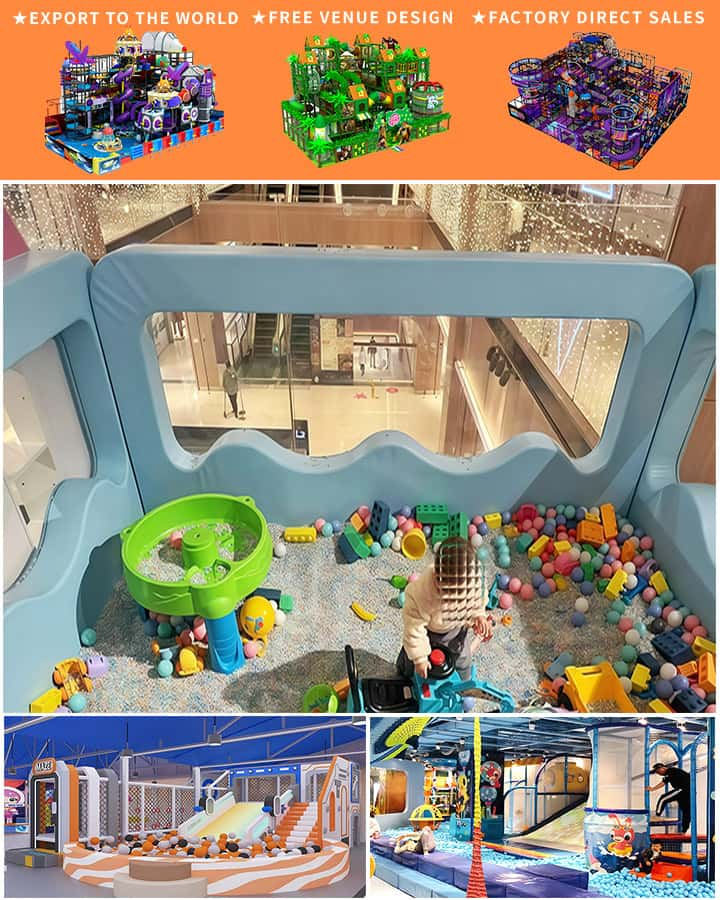Designing an indoor home playground for kids is a fantastic way to ensure they have plenty of fun and get plenty of exercise, regardless of the weather outside. An indoor play area not only provides a creative outlet but also promotes physical development, social skills, and overall well-being. Here’s how you can create the ultimate indoor playground that is both enjoyable and safe for your children.
Planning Your Space
The first step in creating an indoor playground is to choose the right space within your home. This could be a spare room, a basement, or even a section of a living room. The key is to select a location with enough square footage to accommodate various play structures without feeling cramped.
Essential Features
Climbing Wall: A climbing wall is a fantastic addition, providing endless hours of fun while helping kids develop their motor skills and strength. Choose one with safety features like rubber mats at the base to prevent injuries.
Slide: A slide adds an element of excitement to the playground. Make sure it’s appropriately sized for your ceiling height and has soft landing zones with mats or foam padding.
Playhouse: A small playhouse or fort can serve as a hideaway for imaginative play. You can buy pre-made ones or get creative and build your own using cardboard boxes and fabric.

Trampoline: A mini trampoline is great for burning off energy. Ensure it’s securely fastened to the ground and has safety enclosures to prevent falls.
Ball Pool: A ball pit offers sensory delight as kids jump in and search for colorful balls. Use plastic balls and consider adding a small inflatable pool as a container.
Interactive Toys: Incorporate interactive toys such as building blocks, puzzles, and educational games to stimulate their minds.
Safety First
Safety is paramount when creating any play area for children. Here are some essential tips to ensure a secure environment:
- Soft Flooring: Cover the floor with non-toxic, shock-absorbing materials such as foam tiles or interlocking mats.
- Guard Rails: Install guard rails around elevated areas like the top of a slide or climbing wall.
- Non-Toxic Materials: Ensure all equipment is made from non-toxic materials and has passed safety standards.
- Regular Inspections: Regularly check the playground for any signs of wear and tear, and make necessary repairs or replacements.
Customizing the Playground
One of the joys of an indoor playground is the ability to customize it according to your child’s interests and age group. Consider themes such as space adventures, forest explorations, or fairy tales to make the area more engaging. Personalized touches can include painting murals on the walls, adding themed accessories, or incorporating favorite stuffed animals into the setup.
Maintenance Tips
Keeping your indoor playground clean and well-maintained is crucial for longevity and health:
- Daily Cleaning: Wipe down surfaces daily and vacuum the floor to remove dust and debris.
- Deep Cleaning: Periodically deep clean all equipment and soft surfaces to maintain hygiene.
- Organization: Encourage children to tidy up after playing to keep the space organized and safe.
Conclusion
An indoor home playground for kids is an investment in their happiness and development. By carefully planning and incorporating a variety of playful elements, you can create a vibrant, safe, and stimulating environment. Whether it’s a rainy day or just an afternoon filled with boundless energy, your indoor playground will provide countless memories and opportunities for growth. So roll up your sleeves, gather your materials, and get ready to transform a corner of your home into an adventure wonderland!




